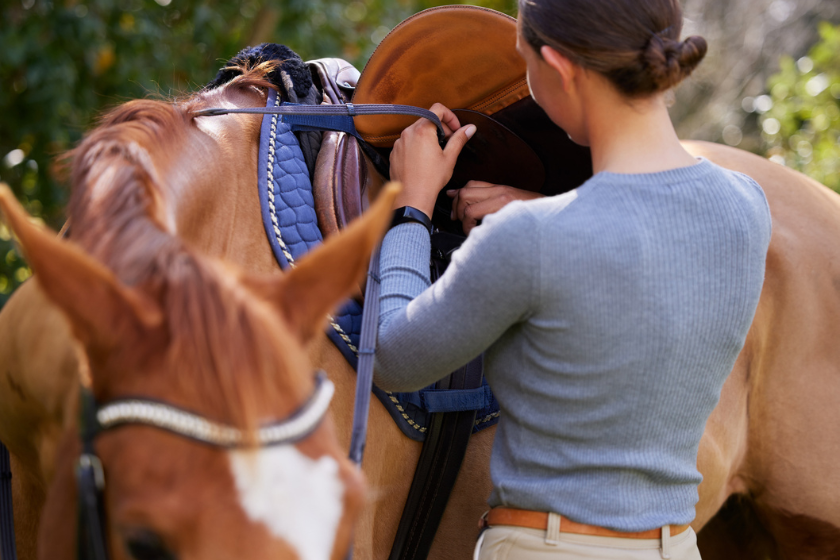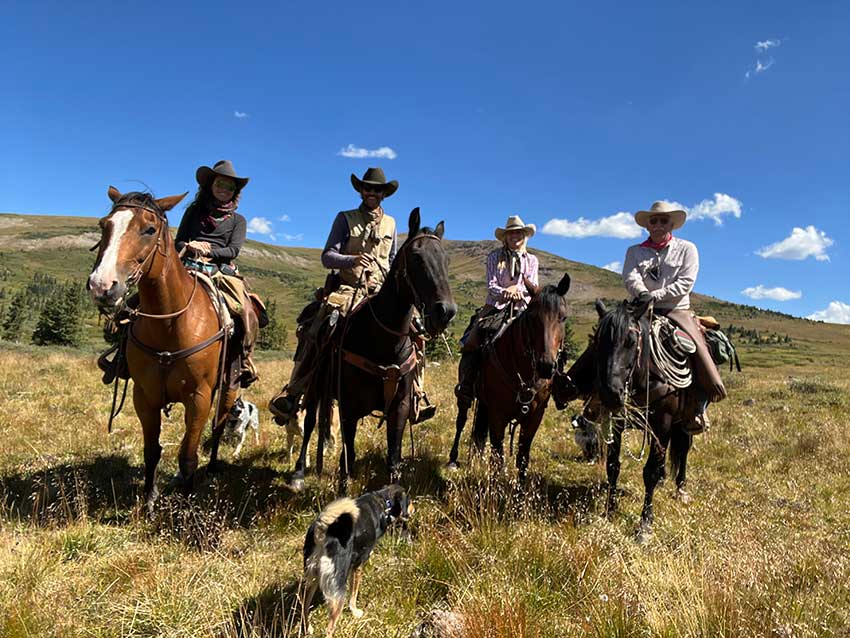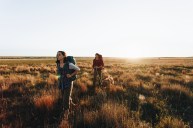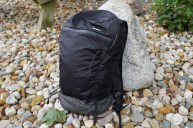This summer, I picked up a job day riding for a local cattle permit holder. It's always been a dream of mine to ride horses in the backcountry, so accepting the gig helped me achieve some of my personal goals. However, I knew basically nothing about horses. I had lessons for three years as a kid, but that was over a decade ago and I didn't remember much besides how to not fall off. However, after the first couple of weeks out riding in the national forest, I became comfortable walking, trotting, and loping over rugged and steep mountain terrain. I also learned a lot about what you need to pack on your horse for a horseback camping trip in the backcountry.
Packing for one day in the wilderness is a little different than packing for an overnight trip, but there are many similarities when it comes to riding horses in the mountains. If you've ever backpacked before, you know you need food, water, shelter, and warm layers to stay safe. This is no different when it comes to packing horses; the only differences are you need to know how to pack a horse and what to bring to keep your horses safe, too.
Whether you're looking to get deep into the wilderness for an elk hunt or just want to camp far away from roads and development, consider hiring an outfitter or prepping for a do-it-yourself horseback pack-in camping trip. Not only will you save your legs, but you'll have some new animal friends to join you on your adventure.
Knowledge and Gear

Horseback riding through mountainous country isn't exactly easy, even when you're an experienced rider. Anything can go wrong and it's important to be prepared physically and mentally. It's also important to have the right gear. To ride in the mountains, you'll want a western-style saddle with a double-cinch and a breast collar. You'll also need a headstall with an appropriate bit for the horse you're riding, split reins, and a thick saddle pad to go under your saddle. Don't forget about horseshoes, too! As far as human gear goes, you'll want leather-bottomed riding boots, tough pants like jeans or canvas, a long sleeve shirt, a neck cover, and a tough, brimmed hat.
Each piece of gear is necessary for specific reasons. Smooth shoes will let you slip quickly out of stirrups if you need to dismount from your horse in a hurry, like if he bucks or gets spooked. Bad things can happen if a foot gets stuck in a stirrup and your horse takes off—no one wants to get dragged. Tough pants keep you safe from sharp brush, pokey branches, biting bugs, and chafing. Long sleeves are necessary for similar reasons, as well as sun protection. A sturdy hat is basically a helmet; your horse will drag you through brush or even try to knock you off by walking under a low-hanging tree branch. You don't want to lose a chunk of hair or get a gnarly cut on your forehead. Plus, the brim keeps the sun out of your eyes, too.
Before you hit the hills, practice neck reining and legging your horse. Being able to quickly and effectively steer your horse through tough terrain will keep you both safe and decrease miscommunications between the both of you. Additionally, practice packing your pack horse prior to your trip. You'll want him to be used to walking behind another horse and carrying the pack saddle and pack saddle pad.
Ideally, your horses will already be trained to pack, ride, trailer, neck rein, and respond to your legging. Extra practice just keeps them sharp and you prepared for the woods.
Bring Two Horses

Gabriela Zaldumbide
Horses can safely carry about 20 percent of their own weight. Typically, this is about 200 to 250 pounds. When day riding, both your weight and the weight of your tack go into this calculation. For example, I weigh about 125 pounds. My saddle, saddle pad, saddle bags, and headstall weigh about 25 pounds. In total, Walter, the horse I ride, carries about 150 pounds, or 15 percent of his body weight on any given day trip. This under-capacity load minimizes the impact on his joints and ligaments and increases his ability to walk long distances.
All this gear fully covers Walter's back. Although I can fit quite a bit in my saddlebags (more on these later), I can't exactly fit a tent, food, water, hiking boots, additional layers, a camp stove and fuel, and other things I need for camping all on one horse. This is where a pack horse comes in. By towing another horse behind you with a halter and lead rope, you can load up your second horse with camping gear and whatever else you may need, as long as it weighs less than 20 percent of his weight. If it's heavier than that, you might need a third horse. This is where a pack string comes in!
Saddlebags

Saddlebags are like cupholders and trunk space for horses. My favorite saddlebags are from Mountain Ridge Gear. They're made in America out of durable canvas, and come in a bunch of colors. They're also rugged enough to get scraped up against trees, trailers, and more without ripping or breaking the zippers or clips. This is where I keep my water bottles, snacks, extra layers, hobbles, bathroom kit, first aid kit, and other stuff I need for day-to-day riding needs.
Overnight Horse Packing Gear

Gabriela Zaldumbide
When packing a horse for a horseback camping trip, you need a few extra things. This includes a halter, a lead rope, a pack saddle, paniers, a set of hobbles, a highline or portable electric fence setup, and water if you won't be near a natural water source. The halter and lead rope are used to guide your pack horse behind your lead horse. You can hobble his front feet when you're not traveling so he can't run off.
Packing a highline or portable electric fence allows your horse to safely graze at your campsite and also keeps them from running away at night or during camp time. Horses require at least two hours of grazing a day in good grass. Additionally, if you're using a highline, don't forget to walk your horse down to the creek so he can get a big drink of water regularly, too. They won't be able to walk around while tied to the highline. To graze horses when using a highline, remove them from the line and hobble them in a small meadow nearby. Grazing them for an hour in the morning while you make breakfast and again at night while cooking dinner is a good technique for keeping your horses fed.
Camping Gear

If you're reading this, you've probably camped before and have a good idea of what you'll need. Obviously, you'll want to pack all your camping gear on your pack horse. This includes your tent, food, water, water purification devices, sleeping bag and pad, hiking boots, fishing rod, rifle, bow, and anything else you need or simply enjoy bringing on camping trips. Just because you'll be on a horseback camping trip doesn't mean you don't need your regular old camping gear, too. Just make sure the pack saddle, pad, horse gear, and camping gear don't exceed your horse's weight limit.
Horseback riding through the boackcountry is an unforgettable experience whether you're out for a trail ride or setting up a multi-day wilderness hunting camp. If you've got the gear, horses, and skills, you're in for a fantastic time exploring new country with four-legged friends you'll always remember.




